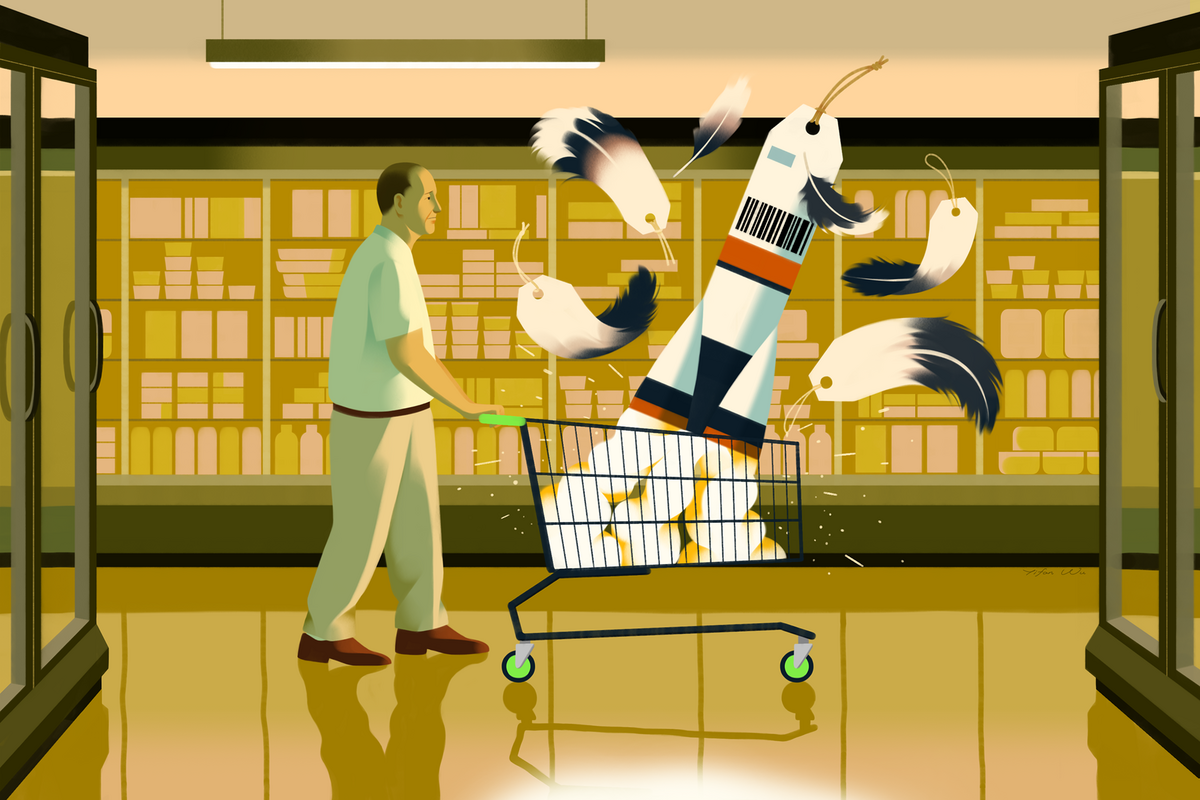Featured Faculty
MUFG Bank Distinguished Professor of International Finance; Professor of Finance; Faculty Director of the EMBA Program

Yifan Wu
Even if you’re unfamiliar with the economic term “rockets and feathers,” it describes a phenomenon you’ve likely encountered recently. When production costs increase, companies raise prices quickly, like a rocket. But when production costs fall, prices fall slowly, like a feather.
While there are some explanations for rockets and feathers, none are very satisfying, says Sergio Rebelo, a professor of finance at the Kellogg School. So, together with coauthors Miguel Santana, a graduate student in economics at Northwestern, and Pedro Teles, a professor at the Portuguese Catholic University, he set out to better understand the phenomenon by borrowing a framework used in psychology to model the process of making decisions.
This framework, popularized in Daniel Kahneman’s book Thinking Fast and Slow, stipulates that we make decisions using one of two systems: either we run on autopilot and make choices based on past decisions that have been working well enough (system 1), or we think more deeply about our choices, which is mentally taxing but likely gets us to a better decision (system 2).
In a recent working paper, Rebelo, Santana, and Teles study how firms would behave if consumers made choices according to the dual system. They find that the resulting model provides a natural explanation for the rockets and feathers phenomenon, as well as some other economic puzzles, like “shrinkflation.”
According to the dual-system framework, “when prices are stable, consumers find themselves in a familiar setting and make decisions using the automatic system 1,” says Rebelo. When prices change, however, the consumer is in an unfamiliar situation, so they turn on system 2 and make the mental effort to compare their regular brand with other alternatives.
“You [as a policymaker] don’t really want to keep prices stable. You’d like prices to change so that there’s a jolt to the consumer.”
—
Sergio Rebelo
All firms raise prices when costs go up significantly, because otherwise they would have a negative margin. But when costs fall, companies with solid sales have an incentive to keep prices constant, given that price changes could lead customers to turn on system 2 and potentially switch brands.
In this way, the strategic interaction between firms and near-rational consumers generates the rockets and feathers phenomenon.
Consumers, of course, could benefit from turning on system 2 from time to time.
If you decide which brand to buy and then never revisit that choice, you may not be getting the best deal, Rebelo explains. The goal isn’t to be thinking about every purchase decision using system 2; that would be too taxing. And, indeed, the cognitive burden on consumers during hyperinflation is substantial, as people spend a lot of brain power deciding what to buy.
But a little jolt every now and then by way of an inflationary or deflationary price change could actually help consumers, says Rebelo—adding a twist to current thinking on monetary policy.
“You [as a policymaker] don’t really want to keep prices stable. You’d like prices to change so that there’s a jolt to the consumer,” he says. “It’s a trade-off: you don’t want the cognitive burden of people in hyperinflation, but you don’t want people to get stuck in their old ways where whatever errors they’ve been making are going to be with them forever. You want to jolt people into optimizing a little bit.”
The researchers’ model also helps explain some other odd pricing behaviors.
Take shrinkflation, for example. This happens when companies keep the price of a product stable but reduce its size. They’re willing to incur the cost of changing their packaging to avoid changing the sticker price. “It’s truly bizarre,” Rebelo says, until you think of it as a way of preventing consumers from turning on system 2.
The model also helps explain why subscription services like Netflix or Amazon Prime change their prices so rarely. Even though there’s almost no cost to changing their price—it’s just an email to customers—the prices of these services have remained remarkably stable over the years.
The rationale, Rebelo says, “is that they don’t want me to revisit the decision of subscribing to Netflix.”
“We think this system 1 and system 2 framework is a good way to think about a range of economic phenomena,” Rebelo says.
Another nice feature of the model, Rebelo says, is that it brings together two different fields: macroeconomics and behavioral psychology.
Marketers often employ cognitive psychology to understand how consumers make their decisions and to nudge them toward a particular choice. On the other hand, macroeconomists generally presume that consumers make optimal choices.
Rebelo says this dichotomy is on display if you walk from one department at Kellogg to another.
“If you go to a marketing class, you hear about deviations from optimal behavior and how they can be used to market a product. If you go to a macroeconomics class, you learn about models in which consumers are incredibly rational,” Rebelo says. Instead of having dichotomy, “maybe we should bring these two perspectives together.”
Emily Stone is a writer in Chicago. She is the former senior editor at Insight.
Rebelo, Sergio, Pedro Teles, and Miguel Santana. 2024. “Behavioral Sticky Prices.” Working paper.